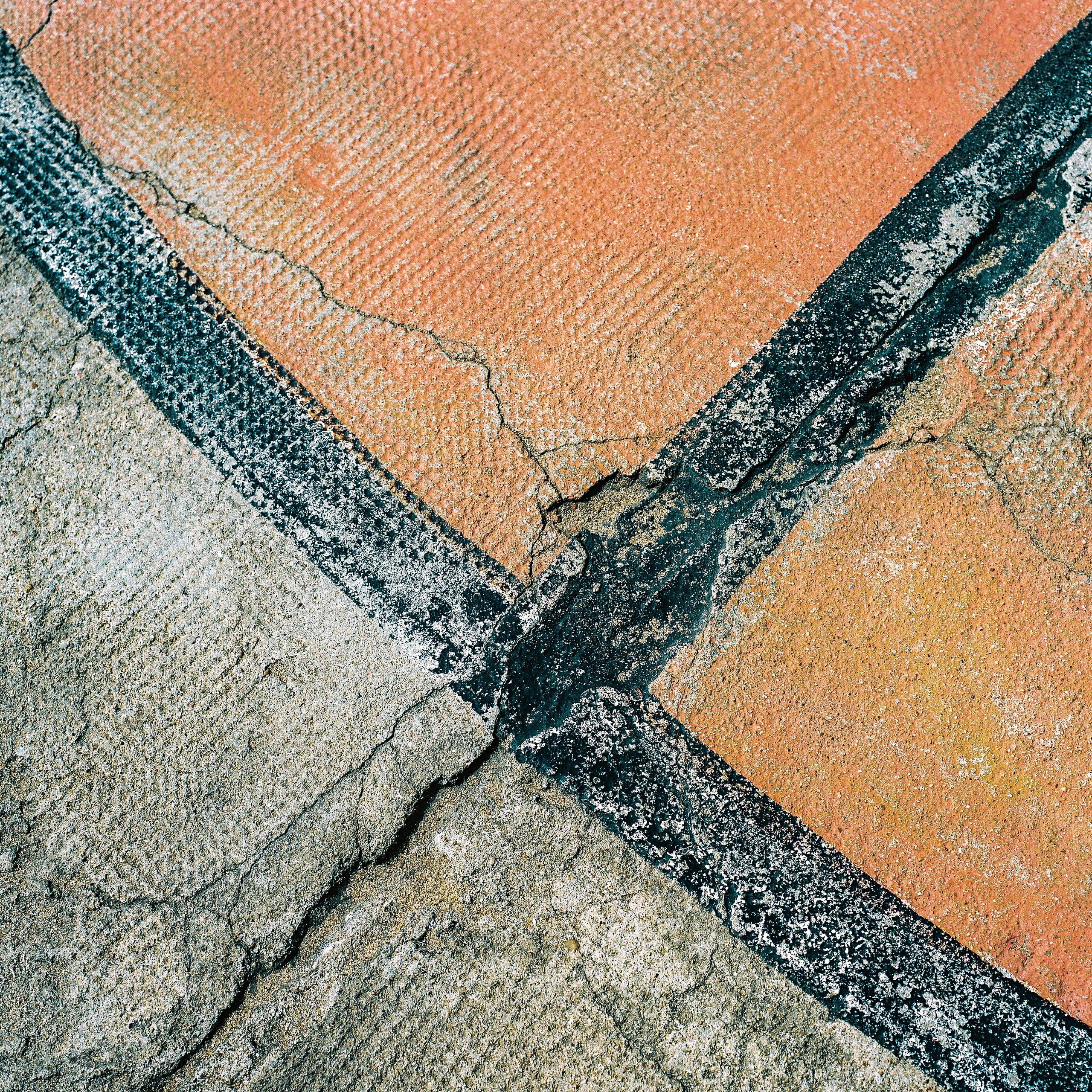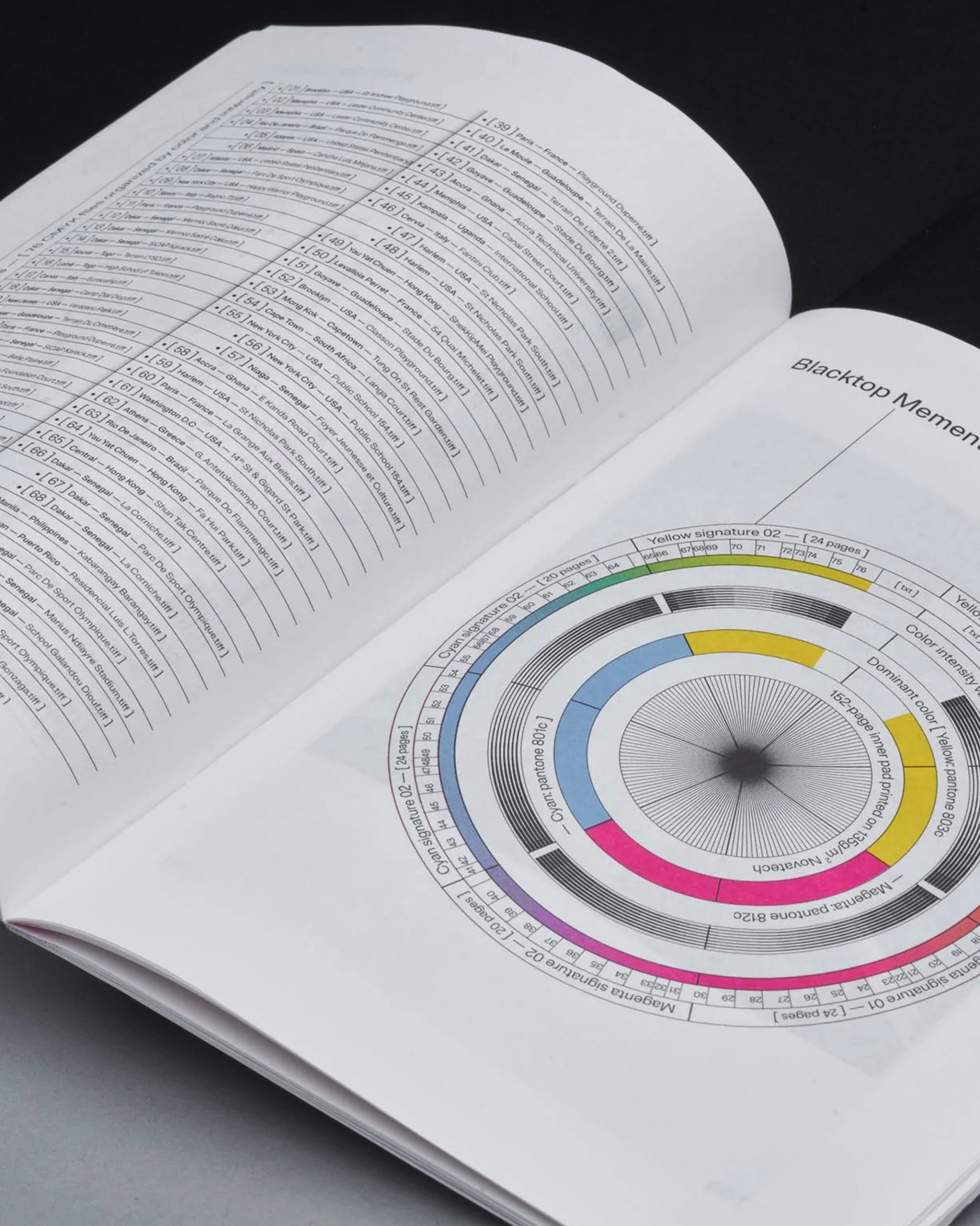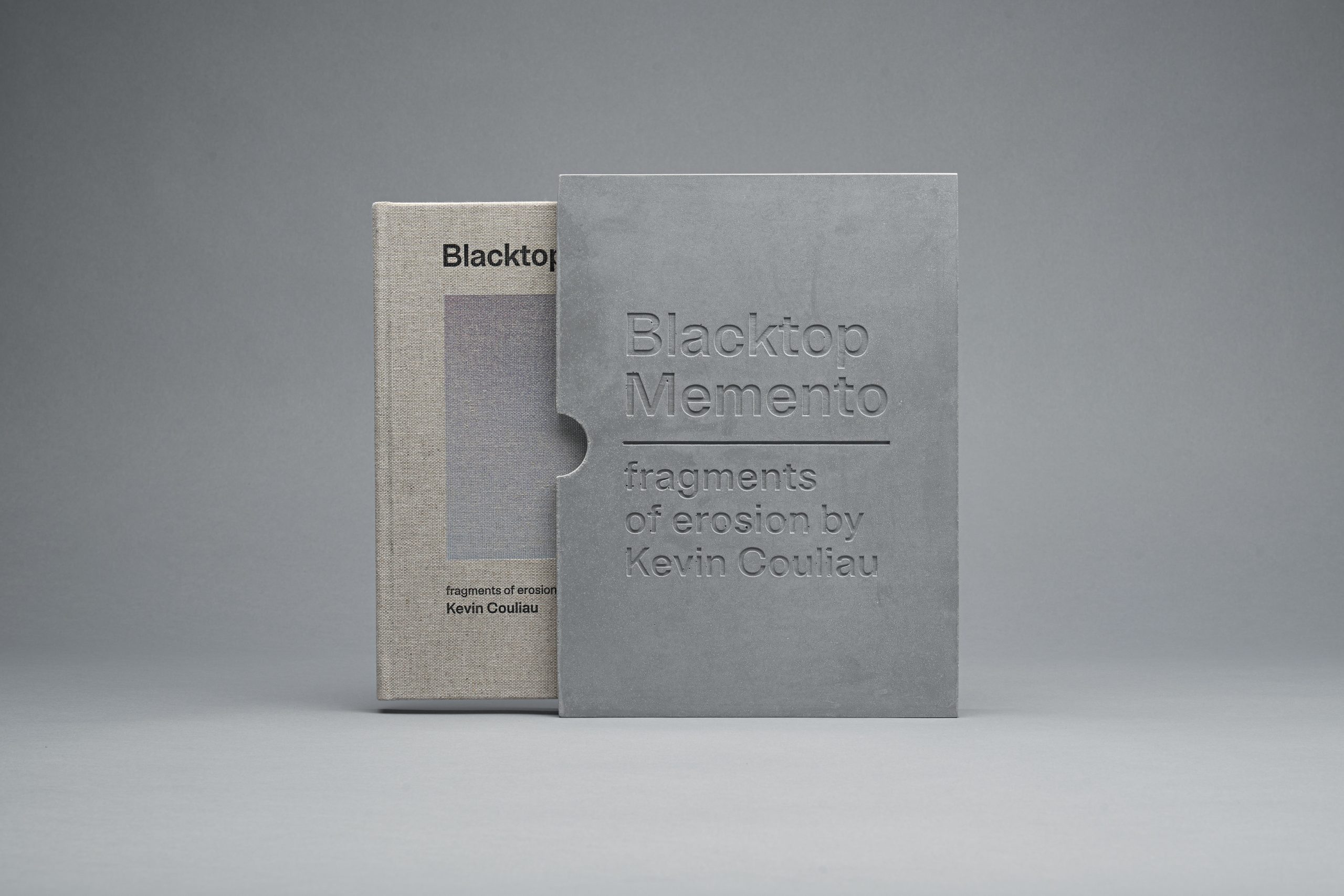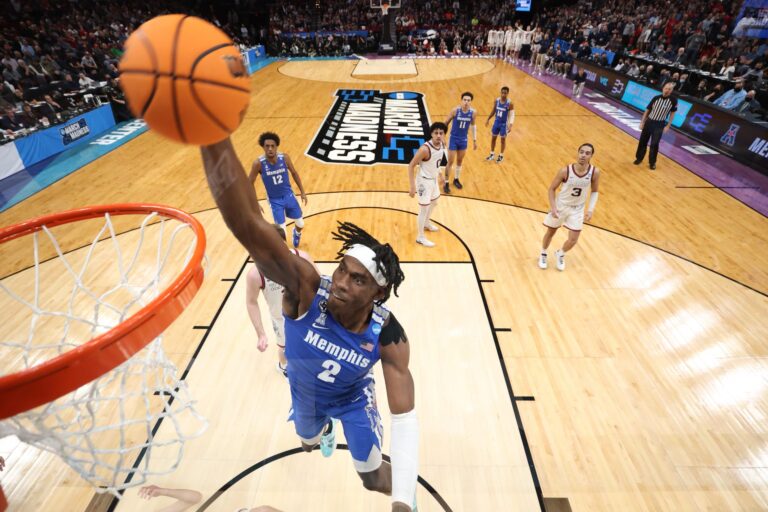‘Blacktop Memento’ Explores the Social Impact of Playground Hoops
This story appears in SLAM 240. Get your copy here.
94 feet of uneven asphalt is one of the most intimate environments that hoopers find themselves in. Barely visible three-point lines. Cracked and shifted baselines. Sun-faded half-court circles. Weeds sprouting from the sidelines. Chipped backboards with rusted chainlink nets. The basketball court is a ravishing display of creative geometry meeting human erosion, a concept Kevin Couliau has been obsessed with for years.
The co-director of the critically acclaimed and award-winning pick-up ball documentary Doin It In The Park—what’s good Bobbito!—has long since captured and given voice to the beauty that resides within the game from behind the lens.
Having spent the last 20 years searching for the perfect basketball court, the near-impossible task has taken the hoops fanatic to some of the most heralded environments in the basketball ecosystem. We’re talking from The Mecca’s Rucker Park to Uganda and Ghana.
Enlisting stills of outdoor courts to discuss our abstract interaction with the local asphalt and its presiding colors, Couliau has retraced through decades worth of personal archives for his first published work titled Blacktop Memento: fragments of erosion.
“There’s something really sensory about it when you step on the court and you look on the ground, you feel that in your shoes and your soles,” Couliau tells SLAM. “It’s sort of a tribute to what we have under our feet for so many hours during our lives. And I like the idea of showing the human erosion, the passage of man without showing any photos of people playing.”
Blacktop Memento: Fragments Of Erosion is available now.
Growing up playing at a massive public park in his hometown of Nantes, France, Couliau’s inspiration for photography began with John Huet’s celebration of the game through images and voices captured in “Soul of the Game” – the ultimate reference for basketball photography, he adds.
The greyscale arrangement in tribute to the urban playground sent Couliau on his own journey that’s spanned over 20 years, documenting the social impact of outdoor basketball and its place in both urbanism and urban planning.
At first, the empty aesthetics of barren basketball courts stood out most notably while a Hasselblad 305 CXI—a medium format camera that he watched his older brothers and friends create skate films with—was kept on hand for extremely close-up stills.
“All these small details that us ballplayers kind of see, but the rest of the world doesn’t see because we step on these courts every day,” Couliau explains over Zoom.

It wasn’t until the beginning of the COVID-19 pandemic that the artist had the opportunity to reflect on the amount of images and work he’d amassed thus far. In total, over 200 textiles were accumulated from around the World, creating the dream Couliau always held of centering his first published book on courts and hoops from across the globe.
Wrapped in a burlap hardcover, 76 photos of courts from over 20 different countries and provinces fill the 160-page art book boasting titular shades that pop amidst an immense use of white space. Utilizing traditional binding techniques, each book is assembled and fashioned by hand at Atelier Bulk in Bordeaux, France.
The pictorial tale additionally pays homage to Couliau’s obsession with how the architecture of various parks and asphalts are integrated into the surrounding landscape. There’s a science to it, and China – he adds – is a master at it.
“What motivates me is to find the cultural differences of each place and analyze how the game is played and see the global picture of basketball throughout the world,” Couliau tells SLAM.
For each disparate atmosphere he’s found himself in, one constant remains; no other sports field, pitch or rink is as graphic as the lines and symmetry filling the court and hoop.
“It’s something that is so rich because of the structure of the hoop, because of the hoop itself, the backboard, the rim, the chains or the net. There are so many varieties of hoops and I think it’s the same for the court itself,” Couliau says.
When he initially sat down to assess the collection of over 200 images, the basketball documentarist was immediately overwhelmed, unsure of how to organize each image. That’s when graphic designer Charlotte Carlier came up with the idea of using each photo’s primary color as a connecting thread throughout the book.

Utilizing Cyan, Magenta, Yellow and Black printing inks, stripes of the aforementioned palette line the binding of each page so the narrative of the work is segmented by color while the back cover features line drawings of the up-close courts found within its pages.
When Couliau first announced the work via his Instagram on June 3rd, the initial reaction to each page’s immense amount of color was that it was done so by paint and brush as opposed to the natural tint of each court captured via the seconds-long click of his camera. Quite the compliment.
The evocative use of casts and geometry doesn’t just paint a thematic connection to each country in the world, the art book is yet another contribution to the culture from a man that’s given so much already.
“It’s pure love for the game,” he says. “That’s what I was searching and aiming for mainly, people from our community realizing the importance of these holy, sacred grounds,” he says.
Couliau’s first and latest physical tribute to the culture is available now on SLAMGoods.com site and CommonPractice.com.
Check out our Latest News and Follow us at Facebook
Original Source







